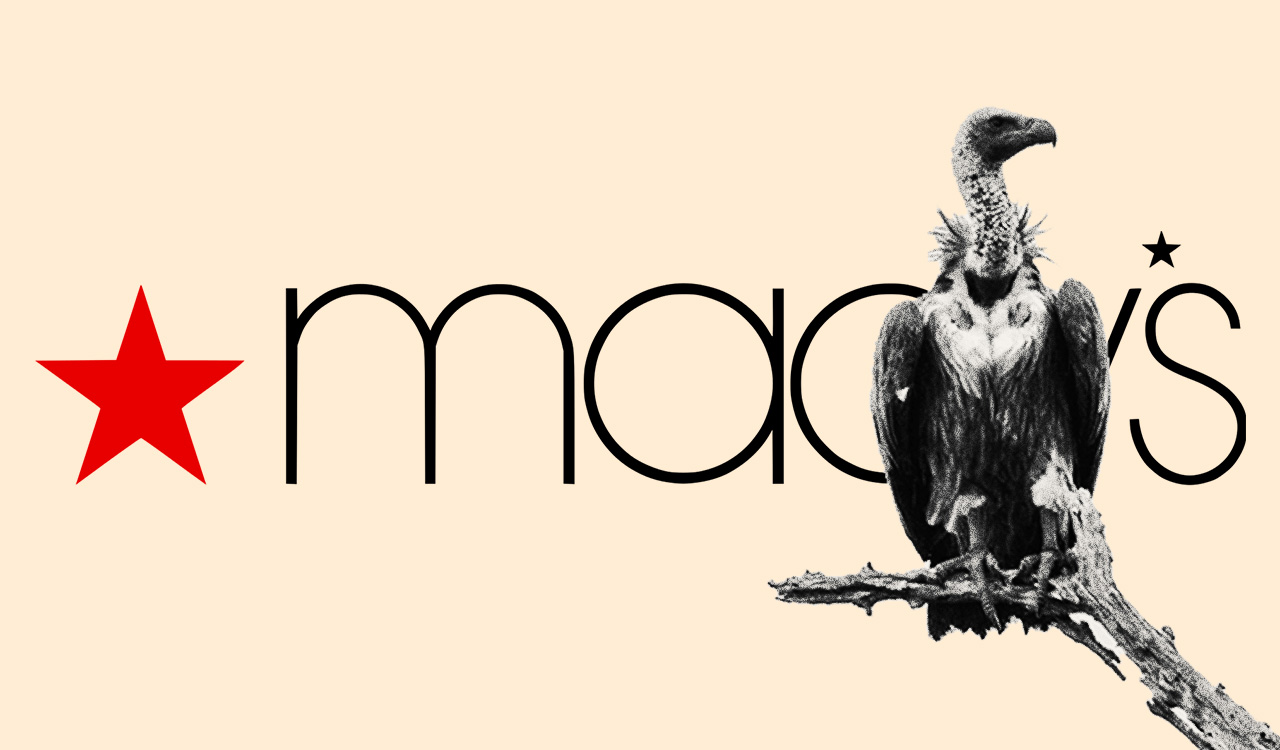Okay, take a deep breath, relax, and cut through all the Arkhouse and Brigade noise about their tenacious acquisition threat to take its $5.8 billion offer directly to Macy’s Inc. shareholders. Yada, Yada, yada. I’m not going to cover what you’ve already read or heard across any number of media sources. I will just offer my opinion.
Macy’s small-format stores play a pivotal role in the company’s omnichannel strategy to expand in existing markets, enter new markets and maintain a presence in existing markets by replacing stores that may not be as productive.
Outgoing CEO Jeff Gennette said, “There is a lack of compelling value in your non-binding proposal,” and then went on to say Macy’s was declining to enter into a non-disclosure agreement or provide any due diligence information. I go with Jeff’s position and hope it prevails, and incoming CEO Tony Spring can take off running when he takes the helm in February. He already has a good head start with an aggressive commitment underway that can fundamentally transform Macy’s model, to say nothing of leading retail brands across the industry into a renaissance.
Spring Awakening
I cheered Macy’s Inc. a couple of years ago when they launched two small-format stores in Texas, with the nameplate, Market by Macy’s. About one-fifth the size of their full-line stores, they were obviously intended as real-time tests. It was two steps forward and one step back as they experimented with different and more localized product assortments, food offerings, events, and other experience-enhancing ideas. All you sailors out there could say they were tacking to the future. Not a bad plan with the headwinds attacking the retail industry.
At the time, my cheering was criticized by my more pragmatic associates who judged the launch as a tactical move, at best, and not scalable. But they will be proven wrong. I spotted the strategy as the first step of a huge strategic structural shift. It was literally the beginning of a de-massification of the brand, ultimately locating hundreds or maybe thousands of Macy’s and Bloomie’s small stores within “neighborhoods” of finitely targeted consumers. Sitting on so much valuable customer data, the plan was designed to respond to local consumers and their product and experiential preferences.
Big Strategic Vision. Big Strategic Challenge.
Fast forward to an April 2022 JP Morgan Chase Annual Retail Roundup meeting where Macy’s COO/CFO, Adrian Mitchell, laid out a very clear-eyed path forward, recognizing the obstacles and issues. He also identified numerous opportunities Macy’s was preparing to capitalize on the need for agility in uncertain times. Among Mitchell’s list of opportunities and headwinds, I heard an emphasis on personalization, and localization — namely off-mall smaller store formats.
And fast forward again, Macy’s Inc. recently announced “an accelerated expansion of its small-format store strategy (including Bloomie’s) potentially tripling the total number of its small-format stores through fall 2025. Beginning in 2024, up to 30 new Macy’s small-format locations will open across the country. This expansion is in addition to the nearly 15 small-format Macy’s and Bloomie’s locations that Macy’s, Inc. currently operates. Paired with their positive digital experience, the small-format stores are intended to enhance the company’s store portfolio with a mix of the best on- and off-mall locations, to deliver a seamless shopping experience across channels.” Well, that’s a commitment.
Was Market by Macy’s the New Coke?
Note that Macy’s made an important decision, wisely, in my opinion, to drop the “Market by Macy’s” nameplate and revert back to the simply iconic Macy’s. Here’s a case study of why. Remember New Coke? The reformulated Coca-Cola brand, launched in 1985, was intended to revitalize the flagship brand. Its ultimate failure in 1992 led a coterie of marketing experts to label the move as “the biggest marketing blunder of all time.” Need I say more? On the other hand, Bloomingdale’s shift to the “Bloomie’s” nameplate for its small stores seems a logical move since its customers nicknamed the brand long ago.
Not Scalable? Hear From the COO/CFO
“We are excited to accelerate the expansion of our small-format strategy as we continue to innovate and reposition our store portfolio to better serve our customers,” said Mitchell. He continued, “Our small-format stores are efficient to operate, provide the customer with a shopping alternative within our omnichannel ecosystem and present a unique opportunity to target high-traffic shopping centers. Our small-format strategy is one way we intend to harness the full power of the Macy’s brand to deliver sustainable, profitable sales growth for Macy’s, Inc. beginning in 2024.”
For the skeptics, this plan is scalable. Bloomie’s by Bloomingdale’s recently announced its inaugural West Coast opening in Seattle. This is the third Bloomie’s to open adding to stores located in Fairfax, VA and the Chicago area. Bloomingdale’s intends to further expand its small-format store footprint in the future.
“As one of Macy’s, Inc.’s five growth vectors, small-format stores play a pivotal role in the company’s omnichannel strategy to expand in existing markets, enter new markets and maintain a presence in existing markets by replacing stores that may not be as productive. Macy’s small-format stores are strategically located in off-mall shopping centers to bring the brand closer to existing and desired customers while also encouraging more frequent visits. Year-to date through spring 2023, Macy’s small-format stores open for more than one fiscal year have achieved positive comparable owned plus licensed sales growth,” said Mitchell.
AI and Data Transparency Catalysts
Advances in analytics now on AI steroids are the tools to unlock precisely who Macy’s loyal and potential new customers are and where they live to guide location decisions. Layer on the merchandise mix with preferred products and services and you have a formula for a small-format, local store. Then create a customer experience environment designed to tap into local tastes, and you deliver what your customers want. It’s local, local, local. It’s personalization.
Forward March
As always, I defer to the cardinal rule: strategy is one thing; implementation is another. As I look at a revitalized Macy’s future, I believe Mr. Spring can successfully lead both. A big challenge? You bet it is! But hey, that’s what he signed up for.




